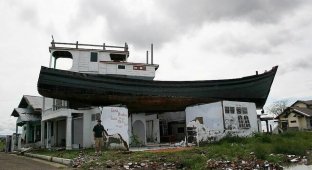The most unusual floods in world history (6 photos)
When it comes to floods, many people think of water as the main actor in the process. It can emerge from river beds due to prolonged rains, it can break through hydraulic structures, and in the tropics it can even hit the shores with powerful ocean tsunamis. 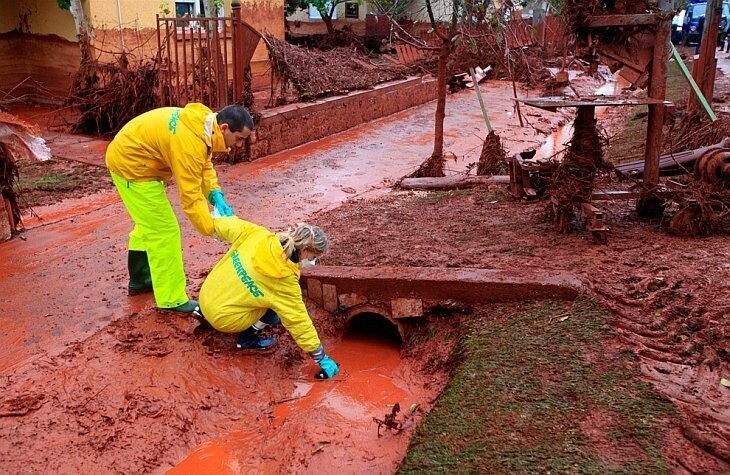
But the cause of flooding can be any other substances in a liquid state. And in world history there is a lot of evidence of this. Syrup, toxic sludge, beer, pulp, oil and even ordinary juice - all these liquids once escaped from storage tanks and caused a lot of trouble to people. Not all of them resulted in human casualties, but the deadliest of the “non-water” floods claimed the lives of 145 people. Let’s begin our review of unusual floods in history with the Kurenevskaya tragedy.
Pulp. USSR, 1961 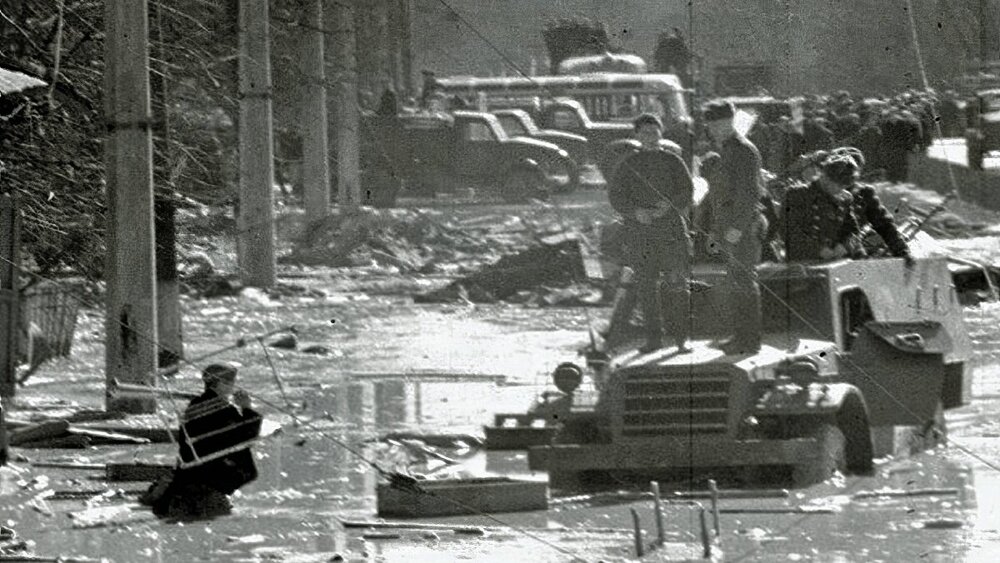
Consequences of the Kurenevskaya tragedy, 1961
Western radio voices called Kyiv March 13, 1961, “Pompeii of the 20th century.” And there was a reason - early in the morning, when people were rushing to work, a huge shaft of pulp (a mixture of water, clay and mud) the height of a five-story building burst out of the Babi Yar ravine onto the streets. It covered the tram depot, the Spartak stadium, several streets and rushed downhill into the working-class district of Kurenevka, covering everything around with a layer of liquid mud and clay.
According to official data, 145 people died, but these figures can hardly be trusted, since, according to Soviet tradition, the scale of the tragedy was greatly downplayed, and the information appeared in the newspapers only three days later in sparse lines of neutral reports.
The Kurenevskaya tragedy, as it was later called, became a classic example of a man-made accident and blatant engineering miscalculations. Its foundation was laid back in 1950, when the leader of the Ukrainian SSR, Nikita Khrushchev, ordered the liquidation of the notorious Babi Yar ravine, in which the Nazis shot from 70 to 200 thousand people during the years of occupation of Kyiv. They decided to build a huge park on the site of the ravine, but first it had to be filled in. For this purpose, Babi Yar began to be filled with waste from the Petrovsky Brick Factory - viscous pulp. The calculation was that in a few years, thanks to alluvium, the ravine would cease to exist.
For more than 10 years, Babi Yar has turned into a huge swamp of clay pulp. Only one dam held this mass, but not a concrete one, but an earthen one. As we later found out, the dam was 8 meters below the required level, and for all 10 years no one monitored its condition. As a result, the water undermined the foundation, which caused the breakthrough.
Oil. Canada, 2013 
Consequences of a man-made oil spill accident in Canada, 2013
It’s hard to be surprised by oil spills these days. Suffice it to recall the breakthrough of a diesel fuel container that occurred in May 2020 in Norilsk. But 21 thousand tons of fuel from a leaky tank, although it caused irreparable damage to the environment, did not cause death. But the 2013 oil disaster in Canada occurred almost in the center of the city of Lag-Mégantic, completely destroying it and ending the lives of fifty people.
This time the cause of the flooding was a train. The train of 73 oil tanks stopped at a station near the city. The driver applied the hand brakes on the carriages and went to the hotel. During his absence, the air gradually left the brake line, and since the station was on a slope, left without braking, the train began to move and rolled into the city of Lag-Mégantic, located three miles from the station.
At a speed of 105 km/h, the cars derailed on a curved section of track right in the center of the city. Moreover, 63 cars not only got off, they fell on their sides, and the oil from them flooded the streets of the settlement (which was also located in a low-lying area). Moreover, a fire occurred, and Lag-Mégantic suddenly burst into flames. The city was extinguished for two days. According to official figures, 47 people died and several dozen were missing.
Beer. Britain, 1814 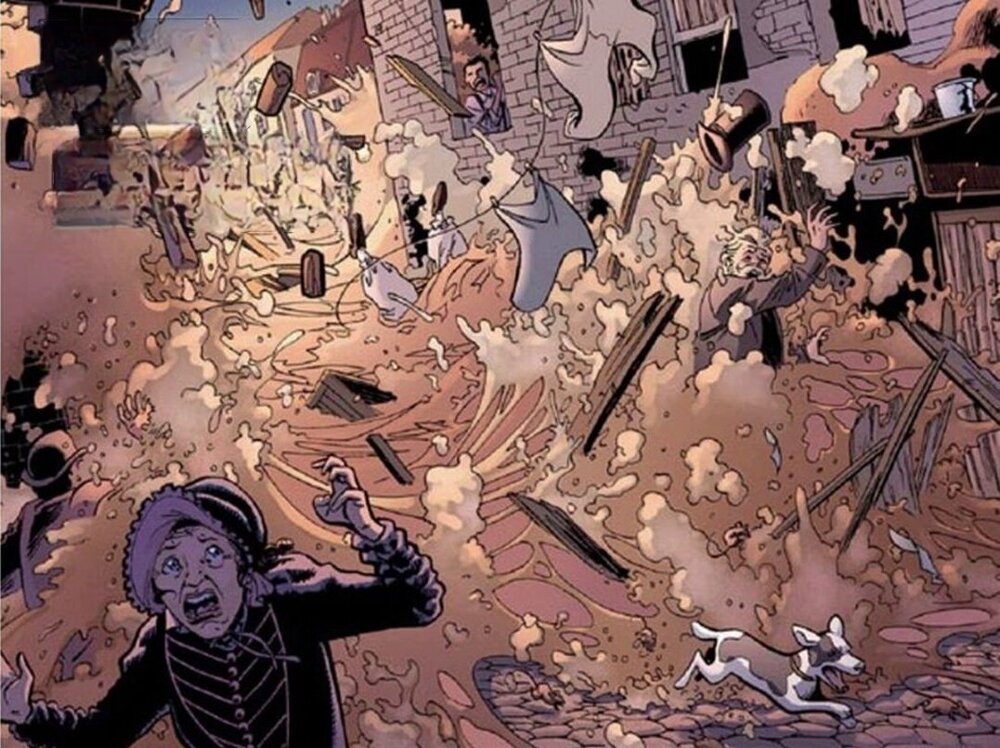
Beer tsunami in London, comic book
And this London beer flood has been overgrown with a large number of tales over many years, from which it is difficult to isolate the truthful grain. But in short, events developed as follows.
The largest brewery in the world at that time had in its fermentation shop 7-meter tanks made of oak boards held together with hoops. What happened was that one of the 29 ties burst, causing a redistribution of the loadconnections to other fastenings. This led to the fact that the main fermentation tank of the plant, containing 610 thousand liters of porter, could not stand it and exploded. A domino effect occurred - smaller barrels then collapsed. After breaking through the wall of the brewery, a total of 1.5 million tons of beer escaped into the street.
The plant was located in a poor area in which residents lived not only in houses, but also in their basements. So they took the brunt of the beer disaster. A colossal flow, like sandpaper, tore off the facades of houses and flooded all the slums. 9 people died who could not get out and choked in the foamy drink.
Syrup. USA, 1919 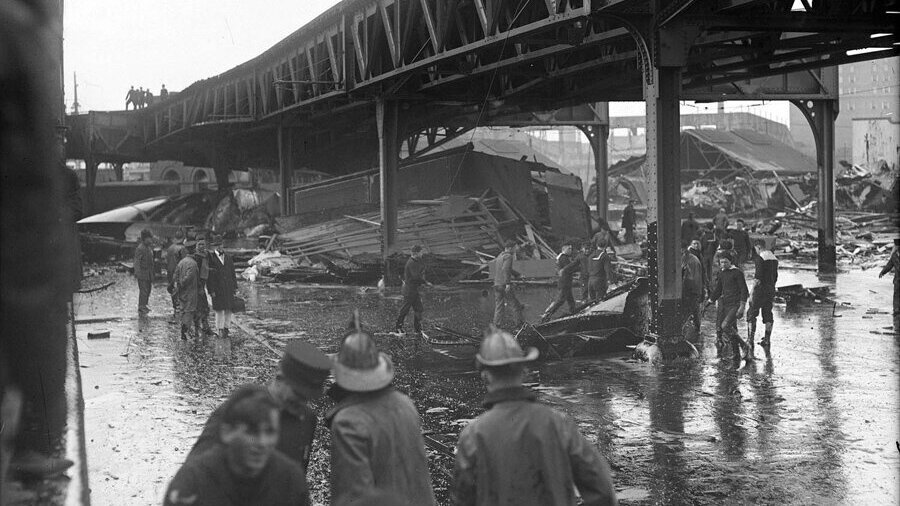
Boston molasses flood
The next man-made accident that occurred in Boston at an ethyl alcohol production plant is also related to alcohol. At that time it was made from fermented molasses - thick, sweet molasses. At the factory it was stored in containers similar to those found in modern fuel storage facilities.
On January 15, 1919, the steel sides of the 15-meter tank could not withstand the pressure and separated. Nine thousand cubic meters of molasses burst onto the streets of Boston, forming a wave as tall as a two-story house. It overturned a steam locomotive with carriages, destroyed a railway trestle and, like beer a century ago in London, flooded the first floors of houses and their basements.
20 people died, and the deaths occurred not only because people choked in the molasses, but also because they could not get out of it, being firmly stuck in the sweet mass.
Red mud. Hungary, 2010 
Red mud reservoir burst in Hungary
And this accident is similar to the Kurenevsky tragedy in Kyiv. In Hungary, an alumina refinery stored waste—extremely toxic red mud—in tanks that were essentially open ponds protected by earthen dams. One of them could not stand it and collapsed on October 4, 2010. As a result, more than a million cubic meters of red mud leaked.
Its toxicity is caused by high alkalinity and if it comes into contact with the skin, a concentrated solution of sludge can cause a burn. The toxic stream flooded low-lying areas of three settlements and caused the death of 10 people. And the total number of victims as a result of the toxic chemical spill exceeded 400 people.
And this is without taking into account the harm to nature - the solution spilled over an area of 40 square meters. km, fell into the rivers, and through them into the Danube, causing the death of fish in Croatia, Serbia and Ukraine.












